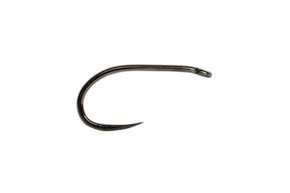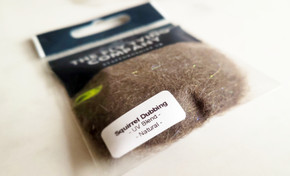North Country Spiders — also called "Soft Hackles" — are simple, elegant wet flies rooted in Yorkshire and the northern counties of England. Sparse and suggestive, they have been fooling trout and grayling for over two centuries. Below are ten of the finest patterns, with their origins, creators, tactics, and materials — followed by a tried-and-true tackle setup for fishing them effectively.
1. Partridge & Orange
- Origin: Yorkshire, 18th century; first published by T.E. Pritt (1885)
- Creator: Attributed to early Yorkshire dressers; popularised by Pritt
- Tactics: Across-and-down swing with a gentle lift
- When to Fish: Spring and early summer
- Represents: Emerging olives
- Why in Top 10: The archetypal spider
- Materials: Hook size 12–16, Orange silk thread, Body: thread only, Grey partridge feather
2. Partridge & Yellow
- Origin: Yorkshire, early 20th century
- Creator: Documented by Edmonds & Lee (1916)
- Tactics: Natural drift in riffles
- When to Fish: Late spring–summer
- Represents: Pale wateries, yellow olives
- Why in Top 10: A summer classic
- Materials: Hook size 12–16, Yellow silk thread, Grey partridge feather
3. Partridge & Green
- Origin: Yorkshire Dales, 19th century
- Creator: Recorded by T.E. Pritt (1885)
- Tactics: Swing through riffles and glides
- When to Fish: May–August
- Represents: Olive duns/nymphs
- Why in Top 10: Olive-season workhorse
- Materials: Hook size 12–16, Green silk thread, Grey partridge feather
4. Snipe & Purple
- Origin: Northern England, late 19th century
- Creator: Listed by T.E. Pritt (1885)
- Tactics: Fish across in broken water
- When to Fish: September–October
- Represents: Autumn olives
- Why in Top 10: Autumn essential
- Materials: Hook size 12–16, Purple silk thread, Snipe feather
5. Snipe & Yellow
- Origin: Yorkshire/Lancashire, 19th century
- Creator: Attributed to regional anglers; listed by Pritt
- Tactics: Dropper in a team
- When to Fish: May–July
- Represents: Pale wateries, yellow sallies
- Why in Top 10: Summer hatch killer
- Materials: Hook size 12–16, Yellow silk thread, Snipe feather
6. Waterhen Bloa
- Origin: Yorkshire, 18th century
- Creator: Recorded by Jackson (1855), later by Pritt
- Tactics: Drift upstream or across during olive hatches
- When to Fish: March–April
- Represents: Large dark olives, BWOs
- Why in Top 10: Best early-season spider
- Materials: Hook size 12–16, Yellow/orange silk thread, Waterhen feather
7. Black Spider
- Origin: Northern England, 18th–19th century
- Creator: Exact origin unknown; recorded by Pritt
- Tactics: Works well on point or in stained water
- When to Fish: All season
- Represents: Midges, gnats
- Why in Top 10: A generalist fly for all conditions
- Materials: Hook size 12–16, Black silk thread, Mole’s fur dubbing, Black hen/starling feather
8. Grey Partridge Spider
- Origin: Yorkshire, 19th century
- Creator: Featured by Pritt, later Edmonds & Lee
- Tactics: Swing in riffled runs
- When to Fish: June–August
- Represents: Summer olives
- Why in Top 10: A lighter summer option
- Materials: Hook size 12–16, Yellow/olive silk thread, Hare’s ear dubbing, Grey partridge feather
9. Woodcock & Hare’s Ear
- Origin: Northern England, 19th century
- Creator: Traditional Yorkshire pattern
- Tactics: Great as top dropper
- When to Fish: All season; shines in spring
- Represents: March browns, olive duns
- Why in Top 10: Buggy, natural, highly effective
- Materials: Hook size 12–14, Brown silk thread, Hare’s ear dubbing, Woodcock feather
10. March Brown Spider
- Origin: Northern England, 19th century
- Creator: Developed for the March Brown hatch; described by Jackson and Pritt
- Tactics: Fish upstream during March Brown hatches
- When to Fish: March–April
- Represents: March Brown upwing
- Why in Top 10: Purpose-built for a famous hatch
- Materials: Hook size 12–14, Brown/primrose silk thread, Hare’s ear or brown dubbing, Brown partridge/hen feather
Recommended Tackle Setup
Fishing spiders is all about presentation and movement. A light, sensitive setup is ideal:
- Rod: 9ft–10ft, 3–4wt fly rod (longer rods help with line control)
- Reel: Lightweight trout reel with smooth drag
- Line: Floating line, weight-forward (WF) or double taper (DT)
- Leader: 9–12ft tapered leader to 4–6lb (5X–6X) tippet
- Setup: Fish spiders in a team of 2–3 flies, spaced 18–24 inches apart
- Method: Cast upstream or across-and-down; let them drift naturally and induce movement with subtle lifts
Why North Country Spiders Still Shine
They succeed because they are suggestive, sparse, and mobile, imitating insects in their most vulnerable state — emerging. Paired with the right tackle, they remain as deadly on Britain’s rivers today as when Jackson and Pritt first wrote about them.












